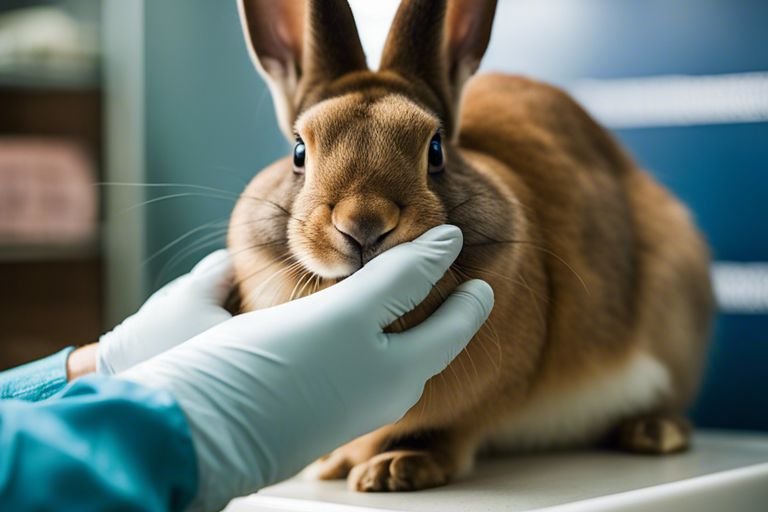Whether you are a first-time owner or have had rabbits for years, it is crucial to be aware of the signs and treatment of paw fungal infections in Flemish Giant rabbits. These gentle giants are known for their friendly disposition and high susceptibility to fungal infections due to their large size and thick fur. If left untreated, paw fungal infections can lead to severe discomfort and complications for your beloved pet. In this blog post, we will guide you through the identification of paw fungal infections in Flemish Giant rabbits and provide you with effective treatment options to ensure the health and happiness of your furry friend.
Key Takeaways:
- Regular examination: It is crucial to routinely inspect your Flemish Giant rabbit’s paws for any signs of fungal infections.
- Symptoms to look out for: Watch for redness, swelling, or discharge between the toes, as well as limping or a reluctance to put weight on the affected paw.
- Keep paws dry and clean: Ensuring that your rabbit’s living environment is clean and dry can help prevent fungal infections on their paws.
- Treatment options: Antifungal creams or powders prescribed by a veterinarian can effectively treat paw fungal infections in Flemish Giant rabbits.
- Consult a veterinarian: If you suspect your rabbit has a paw fungal infection, it is essential to seek professional help for proper diagnosis and treatment.
Understanding Paw Fungal Infections
One of the most common health issues that Flemish Giant rabbits can face is paw fungal infections. These infections, also known as pododermatitis, are caused by a variety of fungal organisms that thrive in warm, damp environments. It’s important to understand the causes, symptoms, and treatment options for these infections to ensure the health and well-being of your beloved pet.
If you want more in-depth information on rabbit care and health, you can refer to the 4-H Rabbit Manual for valuable insights and tips.
Causes of Fungal Infections in Rabbits
One common cause of paw fungal infections in Flemish Giant rabbits is the presence of wet or soiled bedding in their living environment. When rabbits are constantly exposed to moisture, their skin becomes susceptible to fungal overgrowth and infection. Additionally, poor hygiene and unsanitary living conditions can contribute to the development of these infections.
Recognizing the Symptoms
Recognizing the symptoms of paw fungal infections in Flemish Giant rabbits is crucial for early intervention. You may notice redness, swelling, and a foul odor emanating from your rabbit’s paws. Your rabbit may also demonstrate reluctance to bear weight on the affected limbs and exhibit signs of discomfort or pain. It’s important to pay close attention to your rabbit’s behavior and appearance to catch these symptoms early and seek appropriate treatment.
Remember to keep an eye out for these symptoms in your Flemish Giant rabbit as early detection can significantly improve the prognosis of the infection. If you notice any of these symptoms, it’s crucial to seek veterinary assistance immediately.
Diagnosis
Obviously, if you suspect that your Flemish Giant rabbit may have a fungal infection on their paws, the first step is to get a proper diagnosis. Fungal infections can be tricky to identify on your own, so it’s important to seek veterinary assistance in confirming the presence of a fungal infection.
When to See a Veterinarian
If you notice any signs of paw discomfort, redness, or swelling, it’s time to schedule a visit with your veterinarian. Additionally, if you observe any changes in your rabbit’s behavior, such as limping or reluctance to walk, it’s important to seek professional help as soon as possible. Fungal infections can be uncomfortable and even painful for your rabbit, so it’s crucial to address the issue promptly.
Diagnostic Tests for Fungal Infections
When you take your Flemish Giant rabbit to the veterinarian, they will conduct a thorough examination of the paws to look for any physical signs of fungal infection. In some cases, your veterinarian may also perform skin scrapings or fungal cultures to confirm the presence of fungal organisms. These tests will help determine the specific type of fungus causing the infection, which will guide the treatment plan for your rabbit.
Treatment Strategies
To effectively treat paw fungal infections in your Flemish Giant rabbit, you will need to implement a combination of medication, topical treatments, home care, and prevention strategies. It is important to address the infection promptly to prevent it from worsening and causing discomfort for your rabbit.
Medications and Topical Treatments
When it comes to treating paw fungal infections, your veterinarian may prescribe antifungal medications to combat the infection internally. Additionally, topical treatments such as antifungal ointments or sprays can be applied directly to the affected area to speed up the healing process. It is essential to follow the vet’s instructions carefully and complete the full course of medication to ensure the infection is fully eradicated.
Home Care and Prevention
Alongside medication and topical treatments, there are several home care and prevention strategies you can implement to support your rabbit’s recovery and prevent future infections. Keep your rabbit’s living environment clean and dry, as fungi thrive in moist conditions. Ensure your rabbit has access to a clean, dry living area and clean bedding regularly. Additionally, consider using a pet-safe antifungal spray to sanitize their living space and prevent the spread of the infection.

Conclusion
With these considerations in mind, you can now confidently identify and treat paw fungal infections in your Flemish Giant rabbit. By carefully observing any signs of irritation or infection on your rabbit’s paws, you can take prompt action to seek veterinary care and administer appropriate treatment. Remember to keep your rabbit’s living environment clean and dry to prevent the recurrence of fungal infections. With proper care and attention, you can ensure the health and well-being of your beloved Flemish Giant rabbit.
FAQ: Identifying and Treating Paw Fungal Infections in Flemish Giant Rabbits
Q: What are the symptoms of a paw fungal infection in Flemish Giant rabbits?
A: Paw fungal infections in Flemish Giant rabbits can present as redness, swelling, and irritation on the paws. You may also notice your rabbit licking or chewing at their paws excessively. In severe cases, there may be hair loss and a foul odor.
Q: How can I treat a paw fungal infection in my Flemish Giant rabbit?
A: It is essential to consult with a veterinarian for a proper diagnosis and treatment plan. Typically, treatment may involve antifungal creams or ointments applied to the affected area, along with oral antifungal medications if the infection is severe. Keeping the affected area clean and dry is also crucial for successful treatment.
Q: What steps can I take to prevent paw fungal infections in my Flemish Giant rabbit?
A: To prevent paw fungal infections, ensure that your rabbit’s living environment is clean and dry, with plenty of hay and bedding. Regularly check your rabbit’s paws for any signs of redness or irritation, and trim their nails to prevent dirt and debris from accumulating. Additionally, avoiding wet or damp areas and providing proper ventilation can help reduce the risk of fungal infections.
